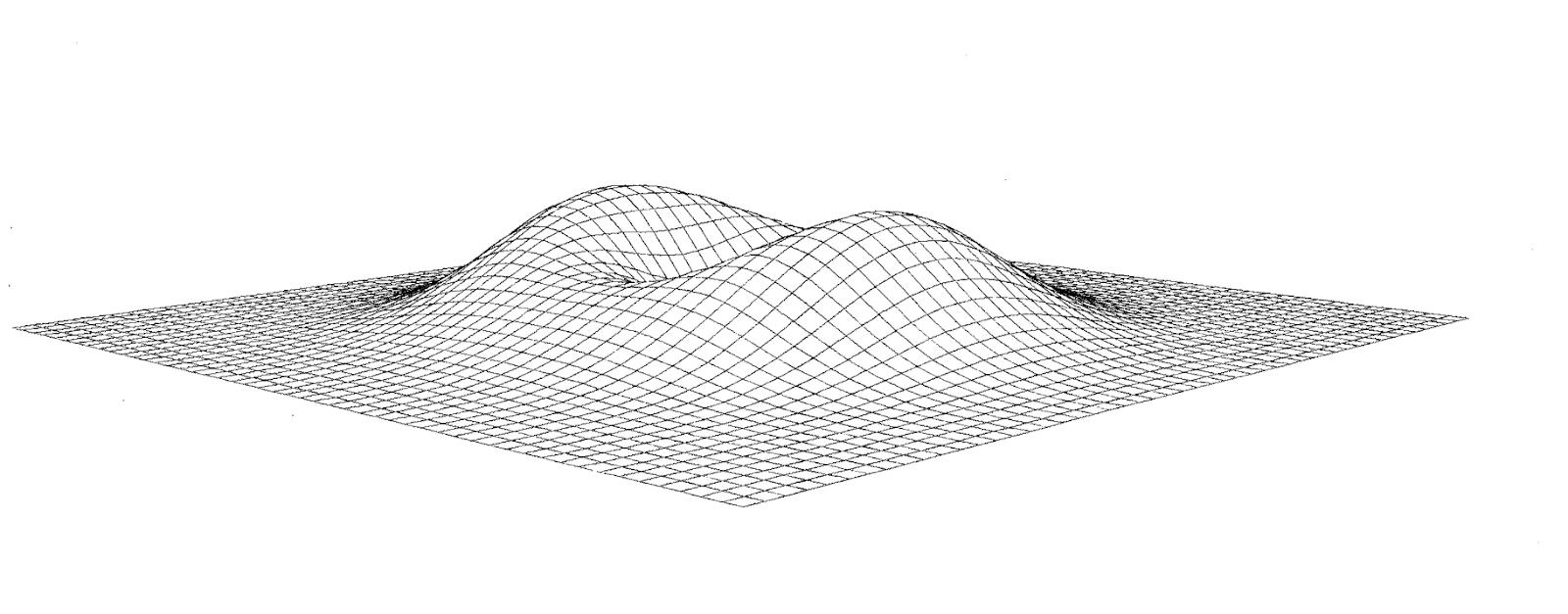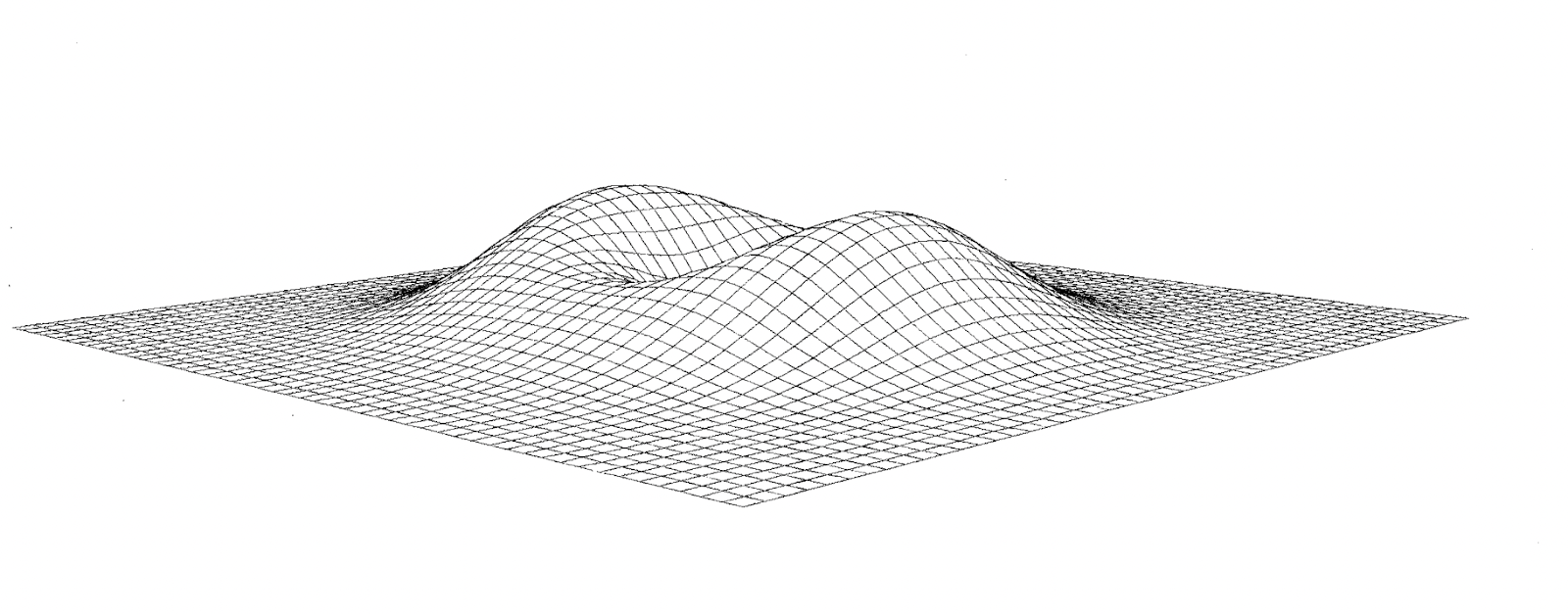First organized by Dimitri Devyatkin in 1973, the Computer Art Festivals were an instrumental forum for the convergence of art and computing technology at a formative moment in the histories of computer art. Within the short span of their three years — taking place at The Kitchen in 1973 and ’74 before relocating to the CUNY Graduate Center in 1975 — the festivals brought together over 100 different artists, showcasing prescient experiments with computers from a wide array of disciplines, including music, film, video, and graphic sculpture.
In this conversation with the festival’s early organizers and participants, EAI and the CUNY Graduate Center will consider computer art’s early history and its entanglement with the multidisciplinary spirit of intermedia art, as well as the role of institutions including public funding structures, arts organizations, and universities in cultivating a rich context and support network for emerging media art.
 Dimitri Devyatkin is a native New Yorker, a director, producer, screenwriter, video artist, and journalist. He earned a BA degree at CUNY. Dimitri worked closely with Woody and Steina Vasulka in The Kitchen video theater in 1971-73, as well as with Nam June Paik, Charlotte Moorman, George Stoney, and other luminaries in video art, Fluxus, and Avant Garde art. Devyatkin studied documentary film directing at VGIK, the Moscow Cinema Institute, and worked for CBS News, Moscow bureau and WTN News. He produced several award winning documentaries for ABC, PBS, Channel Four UK, FR3 French TV.
Dimitri Devyatkin is a native New Yorker, a director, producer, screenwriter, video artist, and journalist. He earned a BA degree at CUNY. Dimitri worked closely with Woody and Steina Vasulka in The Kitchen video theater in 1971-73, as well as with Nam June Paik, Charlotte Moorman, George Stoney, and other luminaries in video art, Fluxus, and Avant Garde art. Devyatkin studied documentary film directing at VGIK, the Moscow Cinema Institute, and worked for CBS News, Moscow bureau and WTN News. He produced several award winning documentaries for ABC, PBS, Channel Four UK, FR3 French TV.
 Louise (Etra) Ledeen began working as a video artist in the early 1970s, intrigued by the characteristics of transmitted light vs. the reflective color of painting and the ability to create kinetic and temporally evolving “canvases.” She worked with her then husband, Bill Etra, and partner Steve Rutt, to build the Rutt/Etra analog video synthesizer which was the primary instrument for her video artwork. Her later computer art curatorial efforts culminated in the 1985 SIGGRAPH Art Show in San Francisco, which later travelled to Spain and Japan. Louise has continued to work at the intersection of technology and media arts throughout her career. Her current area of research is to accelerate the restoration of scientific and cultural heritage films using AI and networked collaboration.
Louise (Etra) Ledeen began working as a video artist in the early 1970s, intrigued by the characteristics of transmitted light vs. the reflective color of painting and the ability to create kinetic and temporally evolving “canvases.” She worked with her then husband, Bill Etra, and partner Steve Rutt, to build the Rutt/Etra analog video synthesizer which was the primary instrument for her video artwork. Her later computer art curatorial efforts culminated in the 1985 SIGGRAPH Art Show in San Francisco, which later travelled to Spain and Japan. Louise has continued to work at the intersection of technology and media arts throughout her career. Her current area of research is to accelerate the restoration of scientific and cultural heritage films using AI and networked collaboration.
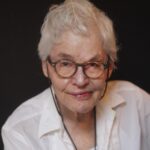 Alison Knowles, 1933, New York City. From the early 1960’s to today, Knowles made appearances and exhibitions throughout the Americas, Europe and Asia. Her collaborators have included John Cage, Marcel Duchamp, Nam June Paik, Dick Higgins & George Maciunas. She is a founding Member of Fluxus, a participant in the inaugural Fluxus concerts, Wiesbaden, Germany, 1962 & returned for the 50th anniversary in Wiesbaden, 2012. Since the 1960’s her works have introduced chance combinatorial & relational interventions in everyday life. Knowles holds a BFA from Middlebury College, Vermont; MFA Pratt Institute, and Honorary Doctorates from PRATT Institute, Columbia College & Main College of Art. In June, 2021, with the collaboration of tinyBe, the Museum Wiesbaden & World’s Advanced Saving Project (WASP), she designed & produced a 3D printed mud building by combining her own artistic process with output from her computer generated work, The House of Dust (1967/2021), Wiesbaden, Germany.
Alison Knowles, 1933, New York City. From the early 1960’s to today, Knowles made appearances and exhibitions throughout the Americas, Europe and Asia. Her collaborators have included John Cage, Marcel Duchamp, Nam June Paik, Dick Higgins & George Maciunas. She is a founding Member of Fluxus, a participant in the inaugural Fluxus concerts, Wiesbaden, Germany, 1962 & returned for the 50th anniversary in Wiesbaden, 2012. Since the 1960’s her works have introduced chance combinatorial & relational interventions in everyday life. Knowles holds a BFA from Middlebury College, Vermont; MFA Pratt Institute, and Honorary Doctorates from PRATT Institute, Columbia College & Main College of Art. In June, 2021, with the collaboration of tinyBe, the Museum Wiesbaden & World’s Advanced Saving Project (WASP), she designed & produced a 3D printed mud building by combining her own artistic process with output from her computer generated work, The House of Dust (1967/2021), Wiesbaden, Germany.
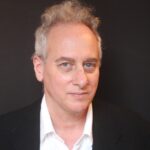 Joshua Selman, 1958, New York City, is an artist & composer whose intermedia practice combines public space intervention, large-scale installation, cultural strategy, and critical journalism. His sound work is archived on Westdeutscher Rundfunk, Cologne, Germany. He’s also known for viral activities, performances and objects, some of which were included in a Whitney Museum Ray Johnson retrospective. Collaborations include Fluxus founders Alison Knowles and late intermedia theorist Dick Higgins. He first exhibited as an intermedia artist at the Fluxus venue, Emily Harvey Gallery, Soho, NYC, 1994. His participation in several artist organized biennials known as Construction in Process led to a post as Executive Director of the International Artists Museum, New York Center, 1997. He’s also a commercial innovator in social networks, and referenced for prior art in a Facebook patent, 2008. In 2003, Selman launched a a new media-based arts organization, Artist Organized Art, who later took over the publishing of New Observations magazine with a mandate to relaunch the seminal arts publication.
Joshua Selman, 1958, New York City, is an artist & composer whose intermedia practice combines public space intervention, large-scale installation, cultural strategy, and critical journalism. His sound work is archived on Westdeutscher Rundfunk, Cologne, Germany. He’s also known for viral activities, performances and objects, some of which were included in a Whitney Museum Ray Johnson retrospective. Collaborations include Fluxus founders Alison Knowles and late intermedia theorist Dick Higgins. He first exhibited as an intermedia artist at the Fluxus venue, Emily Harvey Gallery, Soho, NYC, 1994. His participation in several artist organized biennials known as Construction in Process led to a post as Executive Director of the International Artists Museum, New York Center, 1997. He’s also a commercial innovator in social networks, and referenced for prior art in a Facebook patent, 2008. In 2003, Selman launched a a new media-based arts organization, Artist Organized Art, who later took over the publishing of New Observations magazine with a mandate to relaunch the seminal arts publication.
 Charles Dodge is recognized as an innovative composer, a distinguished educator and, lately, an inventive wine and spirits maker. Dodge’s music used computers to enrich the range of sounds in music and to extend aspects of the compositional process itself. His Earth’s Magnetic Field (1970) was the first musical example of “Sonification,” using a computer to “listen to” a collection of data. Dodge also made some of the first musical works where the computer sounds embodied synthesized speech. His compositional work was recognized with grants and awards from the Guggenheim Foundation, the American Academy of Arts and Letters, the Rockefeller Foundation and others, and commissioned by the Fromm Music Foundation, Nonesuch Records, the Los Angeles Philharmonic, the M.I.T. Experimental Music Studio, the Bourges Electro-Acoustic Music Festival, and others. As a professor of music, Dodge initiated the graduate study of computer music at Columbia University and founded The Center for Computer Music at Brooklyn College, CUNY. He is the co-author, with Thomas A. Jerse, of Computer Music: Synthesis, Composition and Performance (Schirmer Books, 1985; 2nd edition, 1996).
Charles Dodge is recognized as an innovative composer, a distinguished educator and, lately, an inventive wine and spirits maker. Dodge’s music used computers to enrich the range of sounds in music and to extend aspects of the compositional process itself. His Earth’s Magnetic Field (1970) was the first musical example of “Sonification,” using a computer to “listen to” a collection of data. Dodge also made some of the first musical works where the computer sounds embodied synthesized speech. His compositional work was recognized with grants and awards from the Guggenheim Foundation, the American Academy of Arts and Letters, the Rockefeller Foundation and others, and commissioned by the Fromm Music Foundation, Nonesuch Records, the Los Angeles Philharmonic, the M.I.T. Experimental Music Studio, the Bourges Electro-Acoustic Music Festival, and others. As a professor of music, Dodge initiated the graduate study of computer music at Columbia University and founded The Center for Computer Music at Brooklyn College, CUNY. He is the co-author, with Thomas A. Jerse, of Computer Music: Synthesis, Composition and Performance (Schirmer Books, 1985; 2nd edition, 1996).
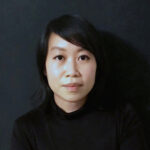 Michelle Kuo is an American curator, writer, and art historian. In 2018, Kuo was appointed the Marlene Hess Curator of Painting and Sculpture at the Museum of Modern Art (MoMA), where she has organized several significant exhibitions including New Order: Art and Technology in the Twenty-First Century. Prior to MoMA, Kuo was the editor-in-chief of Artforum magazine starting in 2010.
Michelle Kuo is an American curator, writer, and art historian. In 2018, Kuo was appointed the Marlene Hess Curator of Painting and Sculpture at the Museum of Modern Art (MoMA), where she has organized several significant exhibitions including New Order: Art and Technology in the Twenty-First Century. Prior to MoMA, Kuo was the editor-in-chief of Artforum magazine starting in 2010.


